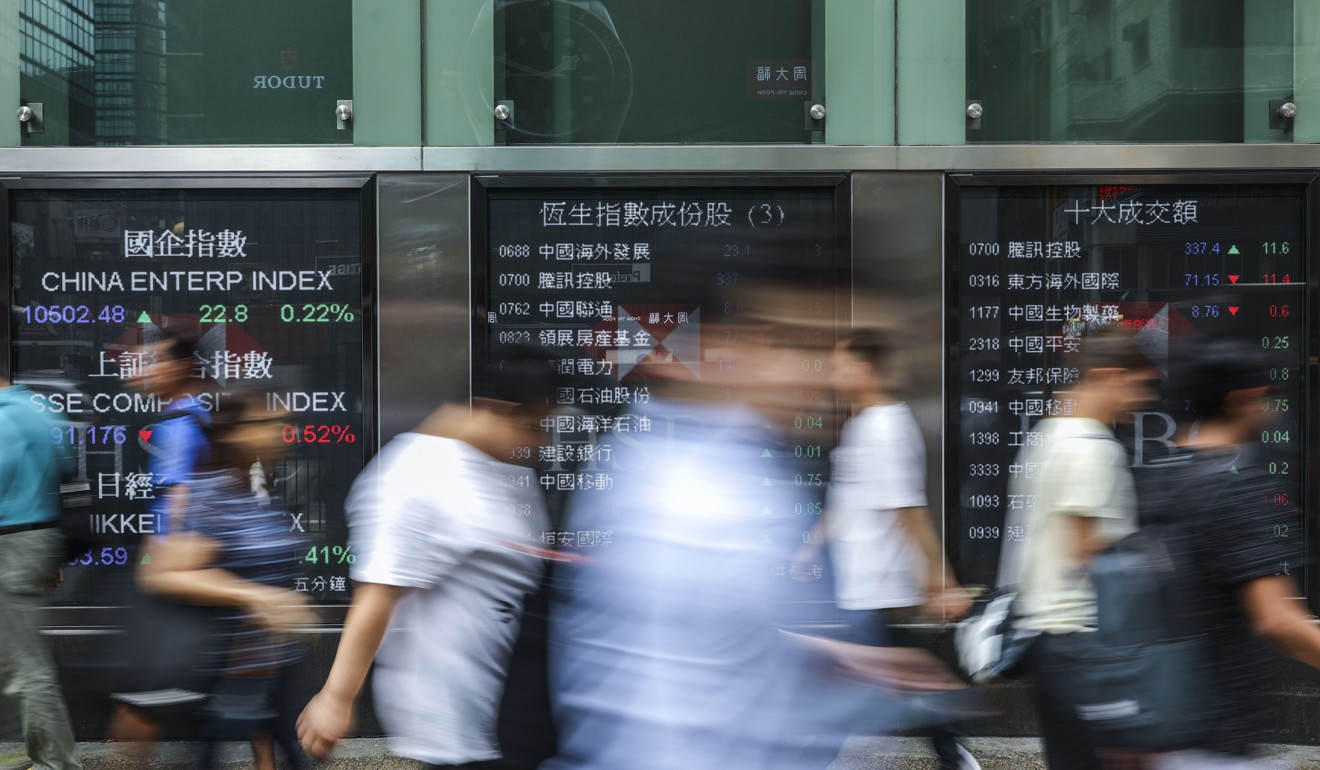
MPF’s Asian investments thumped, members guided towards US stocks
Latest data from fund’s largest investment provider shows sharp drop in funds heavily weighted towards Asia-Pacific

Leading financial advisers suggest Hong Kong Mandatory Provident Fund (MPF) members should fill their boots with US stocks, and bail out of Asian investments, after the most recent calculations from the fund’s largest investment provider said the average value of retirement saving pots fell HK$5,424 (US$669) in the first nine months.
Fresh data from Convoy Financial Services shows most MPF funds invested in Asia suffered losses.
Hardest hit were the stocks funds investing in Asia excluding Japan which lost an average 8.39 per cent in the period. China stock funds ranked second worst, losing 7.27 per cent while Hong Kong funds were stripped of 6.77 per cent of their value, according to Convoy findings.
But investors heavily weighted in US stock funds saw their value soar in the other direction, by 8.84 per cent gain in the nine months. Global stock funds gained 2.38 per cent and default investment strategy funds with heavy investment in bonds, returned 1.78 per cent.

The MPF is Hong Kong’s compulsory retirement scheme which requires employers and 2.8 million workers each to contribute five per cent of their salary. The scheme has 15 fund providers, and members can chose how to allocate their contributions.
But the bad news overall is just 10 per cent of the fund’s total value of HK$856.69 billion (US$109.31 billion) were held in US stocks compared with 39 per cent in Hong Kong shares.
Three per cent is invested in Japan, 8 per cent in the rest of Asia, 19 per cent in bonds, 13 per cent in cash, and 8 per cent in European stocks, according to the Mandatory Provident Fund Schemes Authority’s data as at the end of March.
“Both Hong Kong and mainland stock markets have fallen substantially this year as a result of the worries over the economic slowdown and the ongoing US-China trade war,” said Ryan Chan, associate director at Eddid Securities and Futures.
MPF employees like to invest in local markets – but they will now need to consider diversifying their portfolios and shift into the US or other global stocks to achieve better performance
“By contrast, recently released economic data in the US shows its economic outlook remains strong.
“Stock market performance is reflecting the overall economic situation. The US market is likely to continue to do well in the fourth quarter and next year, while mainland and Hong Kong stock markets will continue to be haunted by the trade war and the downward pressure of the yuan,” Chan said.
“MPF employees like to invest in local markets – but they will now need to consider diversifying their portfolios and shift into the US or other global stocks to achieve better performance.”
Robert Lee, executive director at Grand Finance Group, chimes with Chan.
“The US bull run is likely to be maintained for a while. The country has just signed the new US-Mexico-Canada trade agreement which will ban Chinese products from entering the US via its neighbours. The trade war is likely to benefit US economic outlook and continue to hurt the mainland and Hong Kong economies,” Lee said.
“Investors may like to consider investing in the US short term, and then ensure a more diversified portfolio of stocks and assets, medium term.”
Hong Kong’s Hang Seng Index closed at 27,788.52 at the end of September, a further 0.4 per cent fall for the month, and the fifth month of losses, to remain the worst performing stock market in Asia-Pacific. Its lowest point was 26,345 on September 12, a fifth down on its 2018 peak of 33,484 in January.
The Shanghai Composite Index ended up 1 per cent at 2,821.35 at the end of September, which marked a 15 per cent annual decline so far.
The US benchmark Dow Jones Industrial index has risen more than 8 per cent this year.
The Convoy data shows overall MPF bond funds lost 2.48 per cent in the first nine months compared with overall equity fund losses of 3.79 per cent.
“MPF investors should pay close attention to the interest rate rise cycle which is likely to hurt the bond price,” Chan said.
“Bond fund performances will also be affected as a result, and so younger MPF members, who can afford to take higher risks than older peers, should consider investing more in stocks than in bond funds.”